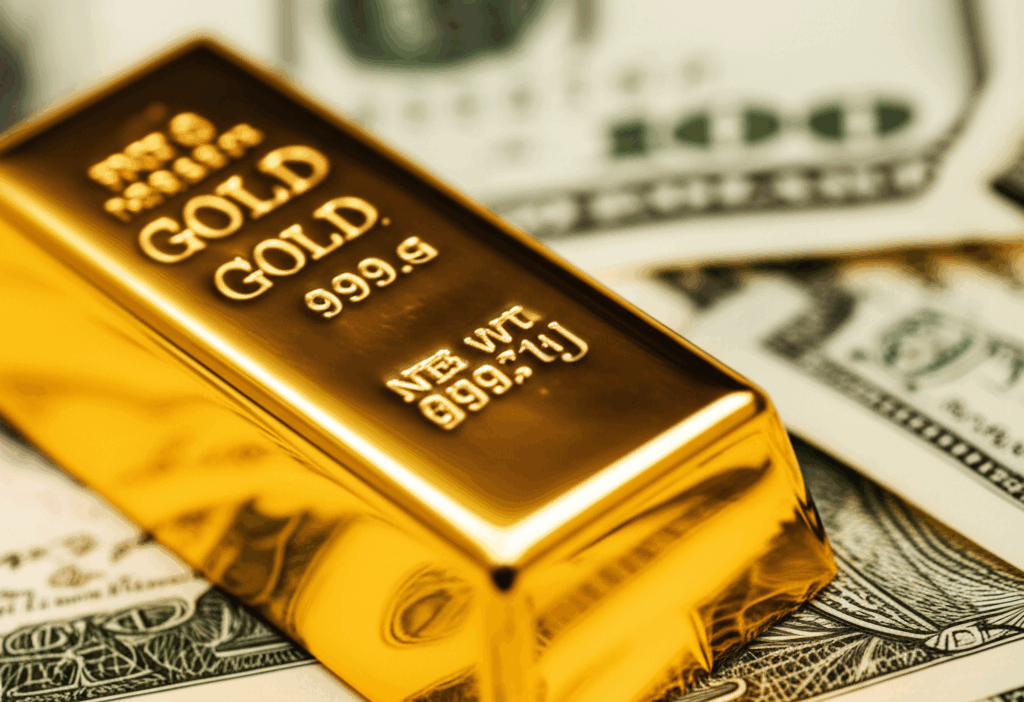Gold: Upside Opens With Breakout as Fed, CPI and BoE Decisions Loom
In the intricate world of financial markets, gold has once again asserted its unique position, staging a notable breakout that has captured the attention of investors globally. This yellow metal, long revered as a safe-haven asset, has recently surged past critical resistance levels, signaling a potential shift in momentum that could pave the way for further gains. However, this bullish sentiment is tempered by the immediate horizon, which is dotted with a trio of high-stakes economic announcements: the Federal Reserve’s monetary policy decision, the latest Consumer Price Index (CPI) report, and the Bank of England’s interest rate review. These looming events are set to inject significant volatility into the markets, making the current moment a fascinating, albeit precarious, period for gold.
The recent breakout in gold prices reflects a complex interplay of factors, from persistent geopolitical tensions and a weakening U.S. dollar to increasing anticipation of a pivot in global monetary policy. For months, gold’s price action had been largely range-bound, oscillating within specific technical barriers. Its recent ascent above these ceilings suggests renewed buying interest and a shift in market sentiment, potentially driven by investors seeking a hedge against inflation or a haven amidst broader economic uncertainties. This technical move is significant, as breakouts often precede larger price movements, attracting both momentum traders and long-term investors. Yet, the sustainability of this rally hinges directly on the forthcoming economic data and central bank pronouncements. Gold, unlike equities or bonds, does not offer a yield, making its appeal heavily influenced by the opportunity cost of holding it relative to interest-bearing assets. This dynamic puts the spotlight firmly on the upcoming decisions from major central banks.
The Federal Reserve’s stance on interest rates is arguably the most impactful of the trio. The market is keenly awaiting signals regarding the Fed’s future path, particularly whether it will maintain its current hawkish posture or signal a potential easing of monetary policy later in the year. If the Fed adopts a more dovish tone, hinting at interest rate cuts, it would typically diminish the attractiveness of the U.S. dollar and reduce the opportunity cost of holding non-yielding gold, thus providing a significant tailwind for its price. Conversely, any indication of prolonged higher rates could dampen gold’s appeal. Closely intertwined with the Fed’s decision is the release of the latest Consumer Price Index (CPI) data. As the primary gauge of inflation, the CPI report will offer crucial insights into the effectiveness of current monetary policies. If inflation shows signs of cooling further, it could reinforce expectations for rate cuts, bolstering gold as a hedge against a potentially weaker dollar. However, a hotter-than-expected CPI print might force central banks to maintain restrictive policies for longer, which could put downward pressure on gold.
Beyond the U.S., the Bank of England’s (BoE) interest rate decision adds another layer of complexity to the global economic picture. While primarily focused on the UK economy, the BoE’s actions contribute to the broader narrative of global monetary policy. Persistent inflation in the UK, coupled with a tight labor market, has presented unique challenges for the BoE. Any hawkish surprise from the BoE could ripple through global markets, potentially strengthening the pound and affecting the dollar index, which indirectly influences dollar-denominated gold. Conversely, a more cautious or dovish stance could align with the global pivot narrative, further supporting gold. These three eventsthe Fed’s decision, the CPI report, and the BoE’s announcementare not isolated. They are interconnected threads in the global economic fabric, and their collective outcome will dictate the near-term trajectory for gold. Investors will be dissecting every word from central bank statements and every data point from the CPI report, looking for clues that could confirm or deny the current bullish breakout. For young investors navigating these waters, understanding these macro drivers is paramount. The current environment is ripe with both opportunity and significant risk, demanding vigilance and a clear understanding of how these powerful forces converge.





